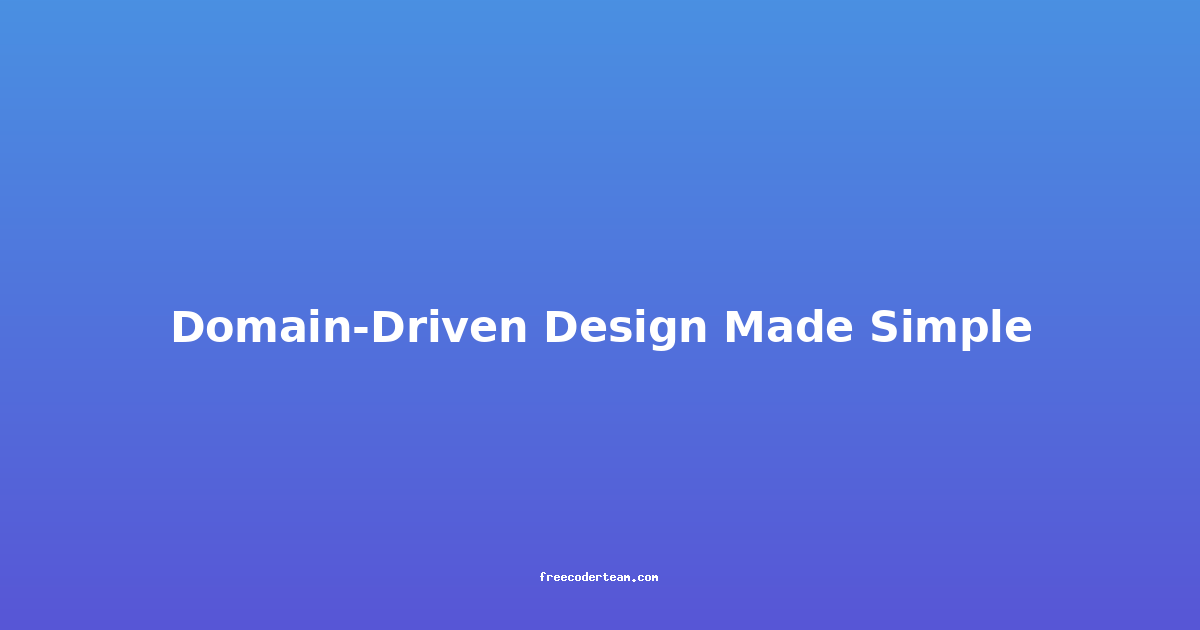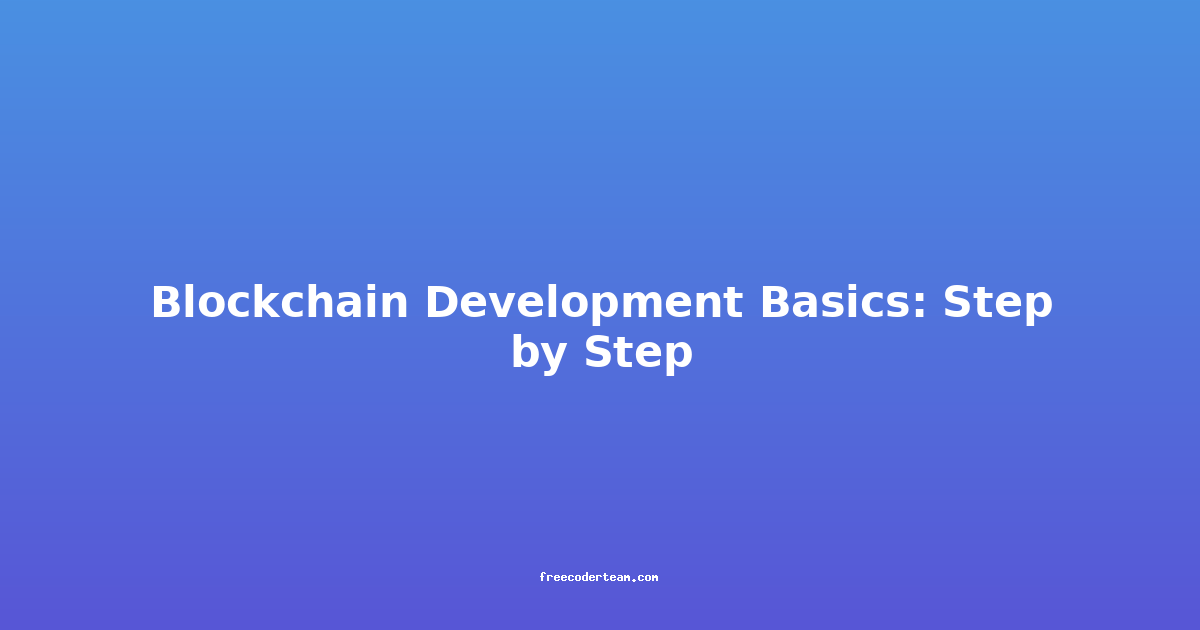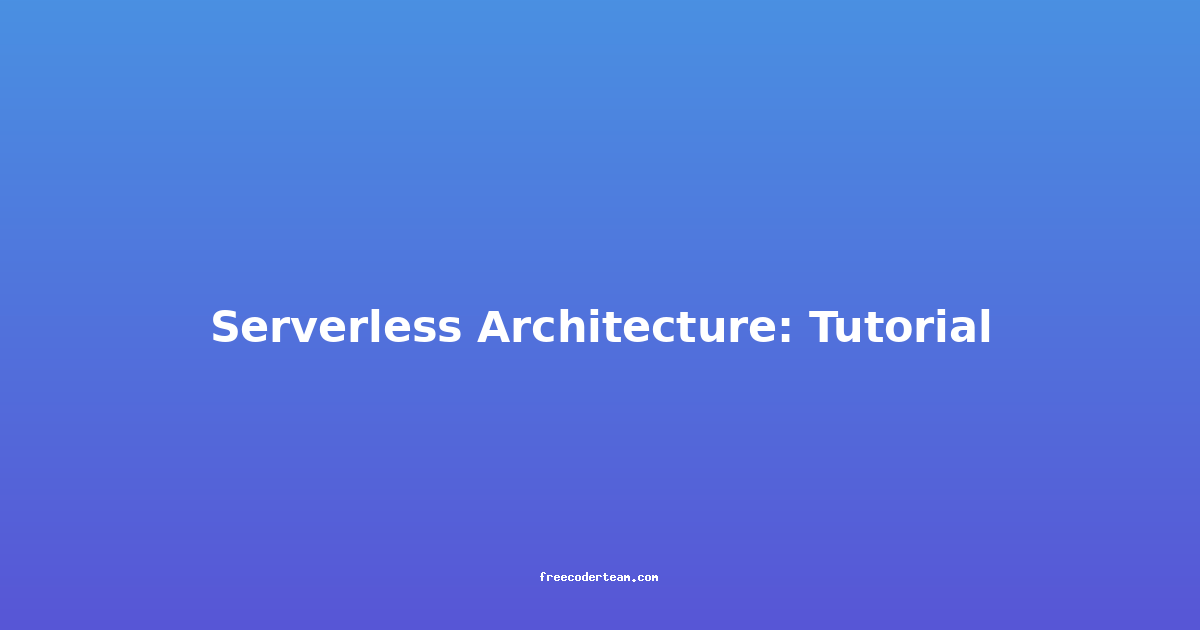Domain-Driven Design Made Simple: A Comprehensive Guide
Introduction
Domain-Driven Design (DDD) is a software development approach that focuses on deeply understanding the domain (the business or problem space) and modeling it in a way that reflects real-world concepts. The goal of DDD is to create software that is not only technically sound but also aligns closely with the business needs, making it easier to maintain and evolve over time.
In this blog post, we'll break down DDD into its core principles, provide practical examples, and share actionable insights to help you apply DDD effectively in your projects.
Key Concepts in Domain-Driven Design
Before diving into practical examples, let's explore some key concepts in DDD:
1. Ubiquitous Language
The ubiquitous language is a shared vocabulary between developers and domain experts. It ensures that everyone involved in the project speaks the same language, reducing misunderstandings and misalignments.
- Example:
In a financial application, terms like "transaction," "account," and "balance" should have the same meaning for both developers and business stakeholders.
2. Domain Model
The domain model is a representation of the business domain in the software. It includes entities, value objects, aggregates, and services that capture the behavior and rules of the domain.
3. Entities
Entities are objects that are identified by their unique identity rather than their attributes. They have a lifecycle that persists across changes in their state.
- Example:
In a user management system, aUserentity might have an ID, name, and email. Even if the name or email changes, the user remains the same entity.
4. Value Objects
Value objects represent simple data structures that are immutable and identified by their values, not by their identity.
- Example:
AMoneyvalue object might have an amount and a currency. TwoMoneyobjects with the same amount and currency are considered equal.
5. Aggregates
Aggregates are groups of related entities and value objects that are treated as a single unit for data changes. They have a root entity that manages the consistency of the aggregate.
- Example:
In a shopping cart system, theCartmight be the aggregate root, containingCartItems(entities) andProductdetails (value objects).
6. Services
Services are operations that don't naturally fit within an entity or value object. They encapsulate business logic that spans multiple entities.
- Example:
APaymentServicemight handle the logic for processing payments across different payment providers.
Practical Example: A Simple E-commerce Application
Let's apply DDD principles to a simple e-commerce application to illustrate how these concepts work together.
Problem Domain
Our e-commerce application allows users to browse products, add them to a cart, and complete purchases. The key domain concepts include:
- Products
- Users
- Carts
- Orders
Step 1: Define the Ubiquitous Language
- Product: A unique item available for purchase.
- User: A customer who can browse, add items to their cart, and place orders.
- Cart: A collection of products that a user can modify before placing an order.
- Order: A finalized cart that represents a purchase.
Step 2: Model the Domain
Entities
- User
- Attributes: ID, Name, Email
- Behavior: Can add items to their cart, place orders.
- Product
- Attributes: ID, Name, Price
- Behavior: Can be added to a cart.
- Order
- Attributes: ID, User, Cart, Status
- Behavior: Can be created, updated, and marked as completed.
Value Objects
- Money
- Attributes: Amount, Currency
- Behavior: Immutable, used to represent prices and totals.
Aggregates
- Cart
- Root:
Cart - Components:
CartItems(which referenceProductentities) - Behavior: Add or remove products, calculate total cost.
- Root:
Services
- OrderService
- Responsibility: Handle the process of creating, updating, and completing orders.
- Methods:
createOrder(User user, Cart cart),completeOrder(Order order).
Step 3: Implement the Domain Model
Here's a simplified implementation of the domain model in Python:
# Value Object: Money
class Money:
def __init__(self, amount: float, currency: str):
self.amount = amount
self.currency = currency
def __eq__(self, other):
return isinstance(other, Money) and self.amount == other.amount and self.currency == other.currency
def __str__(self):
return f"{self.currency} {self.amount}"
# Entity: Product
class Product:
def __init__(self, id: int, name: str, price: Money):
self.id = id
self.name = name
self.price = price
# Entity: User
class User:
def __init__(self, id: int, name: str, email: str):
self.id = id
self.name = name
self.email = email
# Aggregate: Cart
class CartItem:
def __init__(self, product: Product, quantity: int):
self.product = product
self.quantity = quantity
def total_cost(self) -> Money:
return Money(self.product.price.amount * self.quantity, self.product.price.currency)
class Cart:
def __init__(self, user: User):
self.user = user
self.items = []
def add_item(self, product: Product, quantity: int):
self.items.append(CartItem(product, quantity))
def remove_item(self, product: Product):
self.items = [item for item in self.items if item.product != product]
def total_cost(self) -> Money:
return sum((item.total_cost().amount for item in self.items), Money(0, "USD"))
# Entity: Order
class Order:
def __init__(self, id: int, user: User, cart: Cart, status: str):
self.id = id
self.user = user
self.cart = cart
self.status = status
# Service: OrderService
class OrderService:
def create_order(self, user: User, cart: Cart) -> Order:
if cart.total_cost().amount == 0:
raise ValueError("Cannot create an order with an empty cart.")
return Order(id=1, user=user, cart=cart, status="pending")
def complete_order(self, order: Order):
if order.status != "pending":
raise ValueError("Order is not in pending state.")
order.status = "completed"
print(f"Order {order.id} completed for user {order.user.name}.")
# Example Usage
product1 = Product(id=1, name="Laptop", price=Money(amount=1000, currency="USD"))
product2 = Product(id=2, name="Mouse", price=Money(amount=20, currency="USD"))
user = User(id=1, name="Alice", email="alice@example.com")
cart = Cart(user=user)
cart.add_item(product1, quantity=1)
cart.add_item(product2, quantity=2)
order_service = OrderService()
order = order_service.create_order(user, cart)
order_service.complete_order(order)
Best Practices for Implementing Domain-Driven Design
1. Focus on the Core Domain
Not all parts of a system are equally important. Identify the core domain—the part of the application that brings the most value—and focus your modeling efforts there.
2. Collaborate with Domain Experts
Work closely with domain experts to understand the business rules and terminology. This ensures that your domain model accurately reflects the real-world domain.
3. Keep the Domain Layer Independent
The domain layer should be free from technical concerns like databases, UI, and frameworks. This keeps the focus on the business logic and makes the system more maintainable.
4. Use Aggregates to Ensure Consistency
Aggregates help maintain consistency by encapsulating related entities and value objects. Always ensure that changes to an aggregate are atomic.
5. Encapsulate Complex Business Logic
Use services or domain events to encapsulate complex business logic that doesn't naturally fit within an entity or value object.
Common Pitfalls to Avoid
-
Overengineering the Domain Model
- Avoid creating overly complex models that don't add value. Start simple and refine as needed.
-
Ignoring the Ubiquitous Language
- Failing to use a common language can lead to miscommunication and incorrect implementations.
-
Mixing Domain Logic with Infrastructure
- Keep domain logic separate from technical infrastructure to maintain clarity and maintainability.
-
Ignoring Domain Events
- Domain events can help manage complex workflows and maintain consistency across the system.
Conclusion
Domain-Driven Design is a powerful approach for building software that closely aligns with the business domain. By focusing on understanding the domain, using a ubiquitous language, and modeling the domain with entities, value objects, aggregates, and services, you can create software that is not only technically robust but also flexible and maintainable.
Remember, DDD is not a one-size-fits-all solution. It works best when applied thoughtfully to the core domain of your application. By following best practices and avoiding common pitfalls, you can leverage DDD to build high-quality software that truly meets the needs of your business.
Resources for Further Learning
- Domain-Driven Design: Tackling Complexity in the Heart of Software by Eric Evans
- DDD Fundamentals - Official DDD community resources
- Martin Fowler's DDD Articles
By applying these principles and continuously refining your domain model, you'll be well on your way to mastering Domain-Driven Design. Happy coding! 🚀




